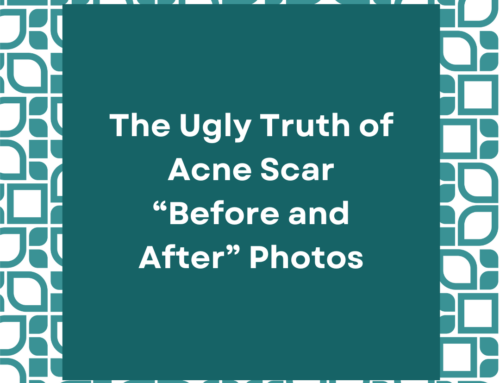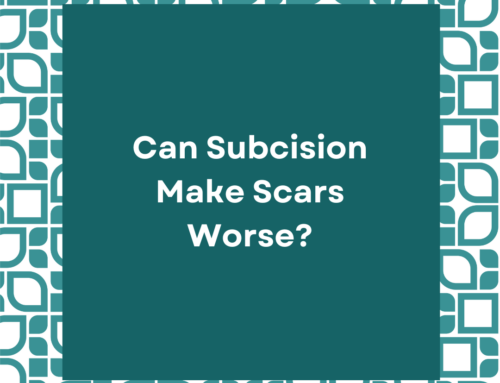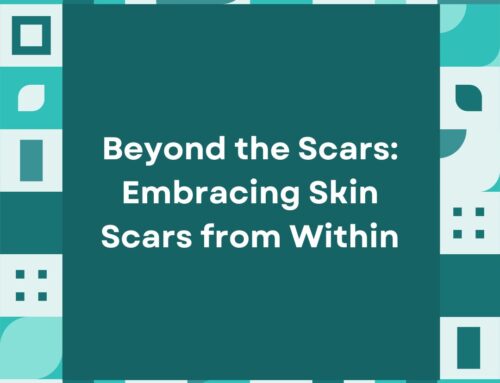I Am a Person of Color: What Should I Know When Treating My Acne Scars?
Acne scarring affects people of all races and backgrounds. When it comes to people of color (POC), the way acne scars manifest and how they are treated becomes instantly more complicated.
Firstly, POC, particularly those with very dark complexions, are many times more likely to develop keloid scars from skin diseases, including but not limited to acne. Common body locations for keloid scars to appear include the chest and jaw, which also happen to be areas where acne frequently erupts.
Due to the thousands of muscle movements that occur in the jaw muscles (masseters) and chest muscles per day, keloid scars can grow larger and larger. These scars not only present cosmetic concerns to patients, but also can be sources of pain and irritation.
Post-inflammatory hyperpigmentation (PIH) is also another prevalent issue among POC. Darker skin types are unique in that every time it experiences trauma to the skin, the melanocytes in the skin are activated to overproduce pigment in the skin.
This leads to unsightly dark marks on the affected areas, which can increase the visibility of flat and hypertrophic scars and also heighten the perceived depth of atrophic scar types.
What should I know about treating keloid scars?
Keloid scarring results from the overproduction of collagen in response to injury to the skin. The most common treatment for keloid scarring is steroid injections, a simple procedure that entails entering the skin with a fine needle to deliver anti-inflammatory medication to the scar.
Keep in mind that repeated trauma to the skin with needles can lead to less than favorable outcomes. This is why it is important to assess what would produce the most optimal effect on the scar without having to stick the scar with a needle too many times.
Keloid scars that are mature (typically over a year old from the original injury) tend to not respond as favorably to steroid injections alone. Usually, chemotherapeutic agents, such as bleomycin or 5-fluorouracil are needed to produce a more drastic effect.
This is important to keep in mind when it comes to keloid scar treatment, as we want to maximize efficacy to minimize the number of times that we physically inject the scar with a needle.
How does PIH affect my treatment options for atrophic acne scarring?
PIH means exactly what the name says: it is hyperpigmentation that is caused by inflammation in the skin. When we perform acne scar treatments, we are essentially inducing “controlled” injury or inflammation to the skin as opposed to the exuberant inflammatory response associated with acne. Despite the fact that we are maintaining a controlled inflammatory environment to promote optimal healing of the scars, there is a chance that PIH occurs or worsens.
Because of this, lasers, particularly CO2 lasers, both fully ablative and fractionated, are not recommended for POC. CO2 lasers have been shown to cause excessive damage to non-targeted skin, which increases the risk of hyperpigmentation. The Erbium:YAG laser is a more recent invention that has reportedly lower rates of thermal damage to the surrounding healthy skin, but providers must still tread with caution, especially on the fully-ablative setting.
What treatments are acceptable for POC struggling with atrophic acne scars?
There are a variety of non-energy-based (or non-laser-based) treatment options for POC. These include the following:
- Subcision: A procedure in which a needle is inserted underneath the skin to mechanically break apart scar tissue and induce collagen production
- CROSS (Chemical Reconstruction of Skin Scarring): A fine technique where a fine applicator tool, such as toothpicks and paintbrushes, are used to apply very fine amounts of deep chemical peeling agents, such as TCA or phenol, to the scar tissue ONLY and not the healthy skin. Deep chemical peels are also known to cause dyspigmentation for POC. However, with this technique, we are applying very miniscule amounts to the face.
- Microneedling: A procedure entailing the use of needle-studded stamps or rollers to induce collagen production in the scars. This is not very effective for deep scars. Instead, when combined with superficial chemical peels, such as alpha-hydroxy acids or beta-hydroxy acids, this can help with flat, hyperpigmented scars.
- Dermal fillers: Biostimulatory or synthetic gel-like substances that promote collagen production and promote immediate or delayed volume restoration. Some common examples include poly-l-lactic acid (PLLA; Sculptra), hyaluronic acid (HA; Restylane, Juvederm), calcium hydroxylapatite (CaHA; Radiesse), or polymethylmethacrylate (PMMA; Bellafill). Please keep in mind that all these fillers have a range of clinical efficacy or duration and should be discussed thoroughly with your provider prior to undergoing these injections.
Preventative measures for PIH during acne scar treatment
PIH is exacerbated by sun exposure. Therefore, avoiding the sun whenever possible, even while you are indoors due to sunlight being able to creep through windows, is an important aftercare measure to keep in mind. Sunscreen, preferably those containing zinc or titanium oxide, should also be applied every two to three hours when exposed to the sun.
Lastly, prescription-grade hydroquinone should also be used for specified periods of time before and after treatments to further prevent PIH from occurring. From our experience, patients who follow these guidelines very rarely encounter issues with PIH. Please make sure to discuss with your doctor the risks, benefits, and preventative measures to take when undergoing acne scarring treatments.
Some Final Words…
Skin of color makes acne scar treatment more challenging but with the right preparation, caution, and treatment strategies, patients are more likely to succeed. It is important to have a full physical examination with your physician to determine how likely you are to develop PIH after acne scar revision.
At the Scar Healing Institute, we take high-resolution photos and perform ultrasound-guided visualization of your scars to determine the severity and depth of your scarring. Having this knowledge will greatly inform us of what next steps to take during your acne scar removal process. Join us at Scar Healing Institute for your scar healing journey!
Schedule an Appointment
Scar Healing Institute
Scar Healing Institute is committed to developing the most effective treatments for scarring. Our team of scar revision specialists are continually inventing the latest technologies and formulas to deliver the best results for our patients.






I quite like looking through a post that can make men and women think. Also, thanks for permitting me to comment.
———??????????????????———-. . ******* New Style Of Music On My Channel *******. . _____***ENJOY* MY* MUSIC***_____. . ——–??????????????????———- WELCOME
I’m very pleased to find this site. I need to to thank you for ones time just for this wonderful read!! I definitely loved every part of it and I have you saved to fav to check out new stuff on your blog.
This is the proper blog for everyone who desires to be familiar with this topic. You realize a great deal its virtually tough to argue with you (not that I actually would want…HaHa). You definitely put a fresh spin for a topic thats been discussing for many years. Great stuff, just fantastic!
Great post. I am experiencing many of these issues as well..